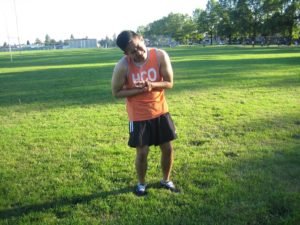The cubital tunnel is a region on the interior elbow where the ulnar nerve traverses. Cubital tunnel syndrome is triggered by flattening force on the nerve and can also be called as ulnar nerve compression.
What are the symptoms?
The symptoms usually come and go and eventually become persistent over time. The numbness or tingling on the exterior perimeter of the hand radiates up to the little finger and that side of the ring finger is felt. The individual will experience weakness when gripping and difficulty with tasks that require fine motor control. There may or may not be pain in the elbow and partial clawing of the ring and little finger. Extended compression can result to muscle wasting in the hand and forearm. The symptoms often worsen at night and the individual might be awakened by the tingling sensations into the hand.
What are the causes?

On the interior of the elbow, the medial epicondyle of the humerus can be felt as a bony lump. At the rear of the elbow, the olecranon process can be felt. The ulna nerve traverses in the tunnel in between these two bones. Under the elbow is where the ulnar nerve goes into the hand, thus supplying several forearm muscles.
The medical epicondyle of the humerus is also called as the funny bone. This is due to the presence of the ulnar nerve that instigates knocking on this spot to be acutely tender and generate tingling sensations. The nerve can also be compressed by various causes which includes the following:
- Bone spurs
- Cubitus valgus where there is an increased angle at the elbow
- Constriction of the tunnel due to rheumatoid arthritis or osteoarthritis
- Tightened bands of fascia over the tunnel
- Tumors
- Subluxation of the nerve over the medial epicondyle
- Constant elbow straightening and bending
- Leaning on the elbows repeatedly
It is important to note that cubital tunnel syndrome can also occur right after a fracture on the ulna or humerus due to the compression of the nerve by the displacement of the fracture or excess swelling and bleeding.
Treatment
The individual should rest from any aggravating activities such as playing the guitar, leaning on the elbows and manual work in some professions. The application of cold therapy can help minimize pain and inflammation. The doctor will prescribe an anti-inflammatory medication. To learn to recognize and manage the symptoms of cubital tunnel syndrome, enroll in a first aid class with a credible provider near you.
In most cases, a splint is applied in order to keep the elbow still in order to allow the nerves to properly heal. Surgery is also an option and typically involves a decompression operation performed by the doctor in order to release the ulnar nerve.
